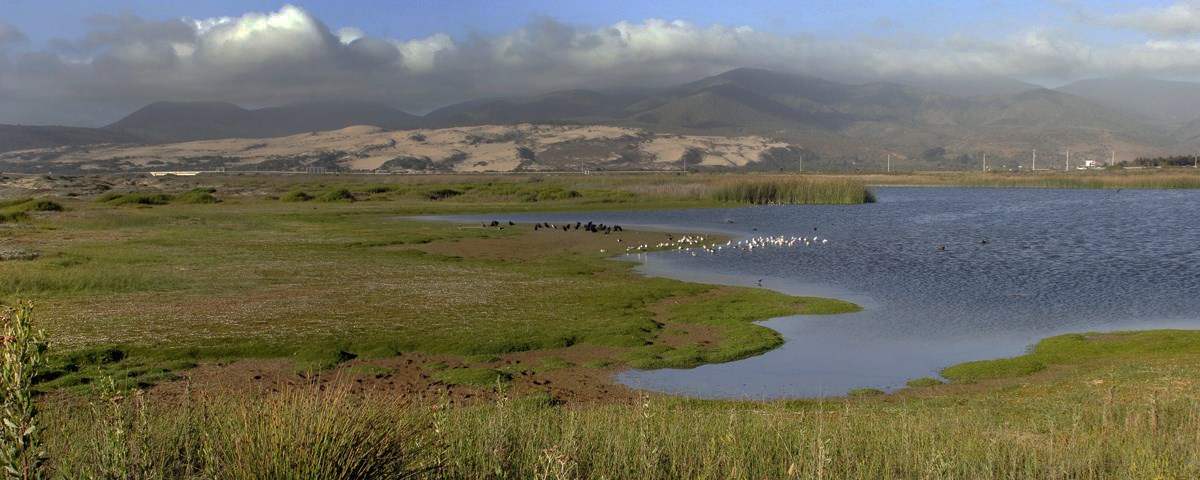
Our Climate Change Strategy’s fourth Pillar defines two priorities in relation to biodiversity: nature-based solutions for CO2 capture and to address adaptation to acute and chronic physical risks. Nature-based solutions seek to use nature’s own resources to address environmental challenges, such as the protection and replanting of woodland and the restoration of wetlands.
We aim to deliver a net zero loss of biodiversity by minimising our impact and mitigating and compensating for any potential negative effects, incorporating biodiversity management from the early stages of exploration, project design and operation. We operate in accordance with local regulations, international standards, ICMM principles and the mitigation hierarchy established by The Copper Mark. ICMM is Taskforce on Nature-related Financial Disclosures (TNFD)’s official piloting partner for the mining and metals sector, and has developed guidance to support it in assessing and disclosing nature-related issues.
In 2023, we focused on the implementation of our updated biodiversity standard, consolidating and supporting biodiversity management of operations, projects and explorations. Its primary objective is to provide the necessary guidelines for the proper management of biodiversity throughout the different phases of the mining cycle (exploration, projects, operations and closure).
The update to this standard responds to the need to continue managing biodiversity at the highest level, as a strategic asset at the company level, and at each of our operations in Chile. This update brings in the guidelines, criteria and best practices developed on the subject to date, both globally and in Chile.
As part of our initial implementation efforts, we conducted a comprehensive site coverage analysis, along with spatial mapping to delineate operational zones and identify areas of high biodiversity value, along with their principal conservation attributes. To safeguard this vital biodiversity value, our company is committed to specific courses of action, including ongoing monitoring, verification and reporting activities.
We focused on the analysis of a base line across the group as a whole, in order to make the necessary adjustments and move forward in 2024. We also continued to define our conceptual nature-based solution framework, in addition to identifying potential pilots to implement in the short and medium term.
Habitats Protected or Restored
27,440 hectares Los Pelambres protected area in the Choapa Valley (Coquimbo region) six times larger than the area used by the mine operations.
4 nature sanctuaries
- Laguna Conchalí
- Monte Aranda
- Quebrada Llau-Llau
- Cerro Santa Inés
Los Pelambres has mining operations near nature sanctuaries:
- Laguna Conchalí (Conchalí Lagoon). This coastal wetland, which had lain abandoned before Los Pelambres undertook its restoration, is an important stopover site for migratory birds and is part of the Ramsar List of Wetlands of International Importance.
- Monte Aranda (Mount Aranda). This nature sanctuary is home to the Chilean palm, an endemic species that the International Union for Conservation of Nature (IUCN) has classified as vulnerable.
- Quebrada Llau-Llau (Llau-Llau ravine). This protected area is home to endangered plant species, such as the Chilean white myrtle and the canelo.
- Cerro Santa Inés (Santa Inés Hill). This site, acquired for conservation purposes by Los Pelambres in 2014 and declared a nature sanctuary by the Chilean Government in 2020, preserves a relict forest that has survived the semi-arid climate by which it is surrounded, thanks to the coastal fogs that usually surround the hill.
The sustainable closure plan for the Quillayes tailings dam at Los Pelambres includes a process of phytostabilisation1 through the planting of native trees and shrubs over an area of 300 hectares. A total of 120 hectares are already planted with more than 20 native species, 96,000 trees, which are closely monitored to review their behaviour and survival. The phytostabilisation process is a pioneering initiative in the large-scale mining industry in Chile.
In Northern Chile, we also have a portfolio of biodiversity initiatives, such as the High Desert Agricultural Centre. Located at the Zaldívar mine, and a joint initiative with the University of Chile, the Centre is dedicated to the study and improvement of plant genetics to enable them to grow in the arid desert conditions for use as a basis of biofuel production. This project was successfully closed at the end of 2023.
In the Quebrada del Diablo area, located in the coastal sector of the Atacama Desert, Centinela protects and seeks to reproduce a slow-growing cactus which, depending on the specific area in which it is located, is classified as vulnerable or endangered. Both Centinela and Los Pelambres monitor the marine environment near their port facilities, regularly analysing the water column, sediments and marine fauna.
Los Pelambres supports R&D projects to repopulate the area near its marine facilities with sea urchins, abalones, red kingklip and other species. In addition, we periodically implement programmes to protect animal, bird and plant species.
Centinela operates an initiative to safeguard the gaviotín chico, a species endemic to Chile and Perú and classified as endangered. Zaldívar is developing the Green Desert (Desierto Verde) project to increase knowledge of species that might be adaptable to desert living conditions. In addition to our work on species and ecosystem protection, we conduct research and provide education. In northern Chile, we have worked on the educational potential of the Morro Moreno National Park near Mejillones, in a joint initiative with Universidad Católica del Norte UCN) and the National Forest Corporation (CONAF).
In 2023, none of our operations have had a significant impact on biodiversity.
Read more about our Biodiversity in our Sustainability Report 2023
